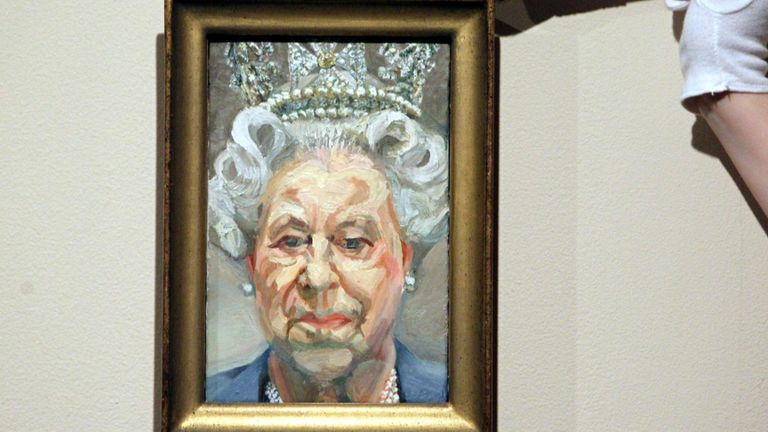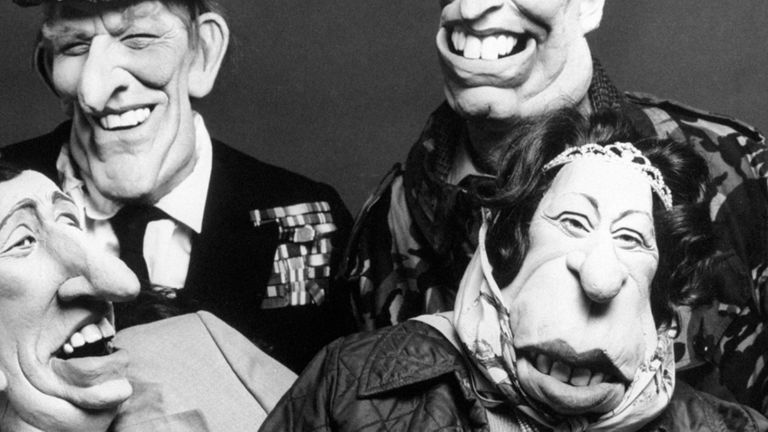[ad_1]
Whatever your thoughts on the monarchy, the Queen is an icon of UK culture and almost certainly the most well-known Briton globally.
She is also arguably the most portrayed woman in the world and subject to a level of exposure that makes Kim Kardashian look like a wallflower.
From questionable teacups to novelty Barbies, her face in profile; she is ubiquitous. Queen Elizabeth II‘s cultural contribution to British life is underpinned by “image”.
During her reign there have been seismic changes in technology. Her coronation itself was ground-breaking as the first ever to be televised, watched by 27 million people.
Her biggest challenge? Retaining that magisterial authority whilst appearing “in touch” with the people. And still millions tune in to watch her.
A relentless public infatuation has fuelled countless screen portrayals, most recently in hit series The Crown.
Imelda Staunton, who plays the Queen in series five, said playing her was a challenge because it involves “so many layers, not only the real person but Helen Mirren, Claire Foy, Olivia Coleman”.
Of course, the Queen couldn’t possibly comment on the endless characterisations as she remains in the shadows of the institution she commands.
The fascination with her is global, from the general public to the great and the good.
“All my life I have known that our head of state is the most respected in the world,” said Downton Abbey creator Julian Fellowes.
“And that American presidents and strange absolute rulers from terrifying states, the one thing they want to do this meet the Queen.”
The monarch has also been celebrated by some of the greatest artists; from Annie Leibovitz to Lucian Freud to Andy Warhol, and even hologram creator Chris Levine.
Imperially and culturally, the UK landscape has been redesigned, and the Queen embodies that soft power – playing a pivotal role in maintaining the allure of Brand Britain.
She’s also been an anti-establishment target, epitomised on the cover of the 1977 Sex Pistols single God Save The Queen, her defaced likeness an easy act of rebellion.
“If you went to most West Indians’ homes at the time they would probably have a picture of the Queen on the wall, as well as a picture of Jesus,” rock photographer Dennis Morris told Sky News.
While his parents admired the Queen, for his generation she represented everything he was rallying against.
In 1977, when the punk movement collided with the Queen’s Silver Jubilee, he was following the Sex Pistols’ provocative boat trip on the Thames.
“It was absolute chaos and when the boat docked there was like half of the London police force waiting for us,” he said.
In 70 years there’s been some cultural catching up for the Queen to do, but she never fails to inspire both those who love her and loathe her.
Her influence over British culture is undeniable.
[ad_2]






